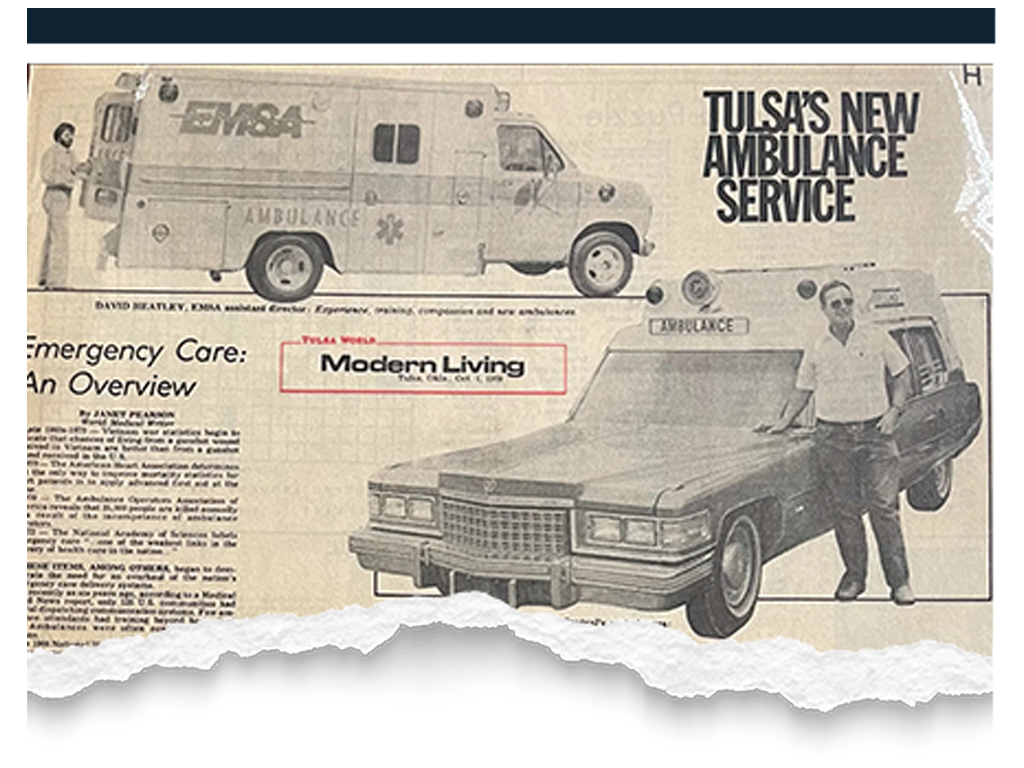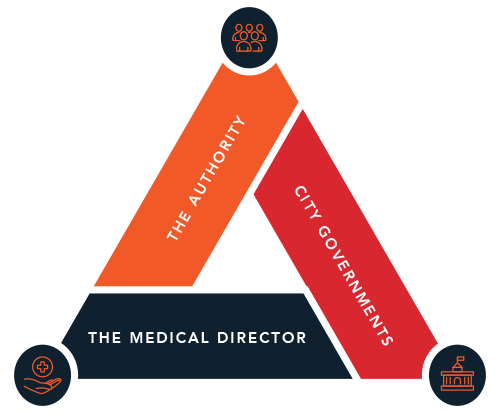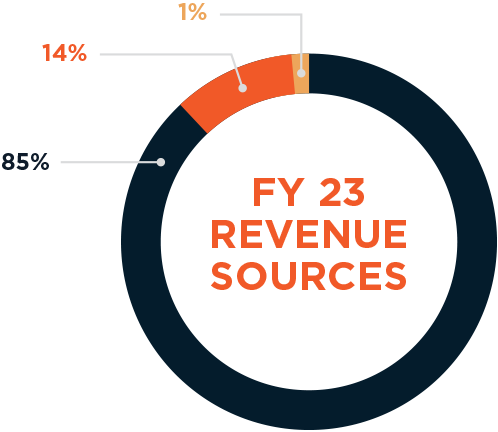EMSA’s Mission
To serve our communities’ pre‐hospital needs through value‐driven, compassionate, and clinically superior care.
Our History
The Emergency Medical Services Authority (EMSA) is Oklahoma’s largest provider of pre-hospital emergency medical care. EMSA was established as a not-for-profit public trust authority in Tulsa in 1977. In 1990, Oklahoma City joined the EMSA system creating what is now known as EMSA’s Western (Oklahoma City area) and Eastern (Tulsa area) Divisions.
EMSA has long been recognized as a national EMS industry leader. We are known for highest quality in clinical care, exceptional operational efficiency, and fiscal integrity.

How the EMSA System Works
EMSA is a public trust of the Tulsa and Oklahoma City governments. EMSA ensures patients receive the highest quality emergency medical service at the best possible price.
EMSA is overseen by an 11-member Board of Trustees, with eight of the 11 trustees appointed by the mayors of Tulsa and Oklahoma City. An independent Medical Director provides medical oversight of the EMSA system and first responders who assist with patient assessment and stabilization.

The Authority
EMSA manages the Authority’s operations and administration. EMSA owns ambulances and other capital equipment used to provide service, manages contractual agreements, maintains patient records, bills and collects, purchases goods and services, works with the cities of Tulsa and Oklahoma City to administer the EMSAcare ambulance subscription program and makes policy recommendations.

Tulsa and OKC City Governments
In addition to appointing individuals to serve on the EMSA Board of Trustees, the cities where EMSA operates must approve any changes to the EMSA Trust Agreement, which governs EMSA operations and EMS ordinances. The cities approve EMSA’s budget and manage the EMSAcare utility bill subscription program.
The Medical Director
The Medical Director oversees clinical credentialing and all clinical protocols of the EMSA system and first responders in the cities EMSA serves. The Medical Director is responsible for clinical quality assurance, researches new treatment modalities, and develops clinical benchmarks. The Medical Director reports to the Medical Control Board, an organization composed of 11 community physicians (10 of whom work in metropolitan hospital emergency departments) who serve voluntarily.
How EMSA is Funded
EMSA receives no money from Oklahoma City or Tulsa’s general funds. Most of the Authority’s $83 Million in annual revenue (2022) comes from commercial insurance and federal reimbursement programs. According to the Oklahoma Health Care Authority, EMSA is the lowest-cost provider in the state. Transport costs for other EMS service models are up to 80% higher than EMSA, based on Medicaid cost report data.

- Net Patient Revenue
Commercial Payors, Medicare/Medicaid, Self-Pay
-
Other Revenue
Special Events, Interest, Etc.
- Non-Capital Subsidies
- 6% City of Tulsa Subsidy
- 6% City of OKC Subsidy
- 1% Western Division Non-beneficiary City Subsidies
- 1% Eastern Division Non-beneficiary City Subsidies
What sets EMSA apart?
By sharing infrastructure and administrative costs and responsibilities between the two largest cities in Oklahoma, EMSA reduces the financial burden on each beneficiary city’s budget. EMSA manages all aspects of a patient’s transport, from the initial 9-1-1 call through the end of the billing process, ensuring consistent quality care as well as maximizing reimbursements resulting in patients paying minimal out of pocket costs.
EMSA utilizes a dynamic deployment model across each division, deploying ambulances every hour of every day based on the historical locations of our highest priority calls allowing for movement of our EMS resources as the needs of the community change. This results in the right resource being at the right place at the right time 24 hours a day seven days a week.
In coordination with the City of Tulsa and City of Oklahoma City, EMSA offers residents the opportunity to become EMSAcare members. Members pay a small monthly fee on their utility bill and in return, EMSA waives all out-of-pocket costs for emergency EMSA transports for permanent members of the household and cities can use the EMSAcare funds collected to pay their annual EMSA subsidy, which is 14% of EMSA’s Annual Revenue. This again reduces the financial burden of maintaining a high performance EMS system with in their respective cities.
Service Area Map
EMSA serves over 1.1 million Oklahomans each year in 12 communities and surrounding areas.

Leadership Team
Johna Easley, MBA, CHC
President & CEO
Lora Conger, CPA
Chief Financial Officer
Adam Paluka, APR
Chief Public Affairs Officer
